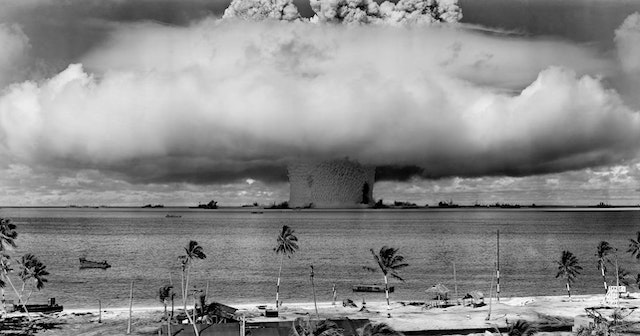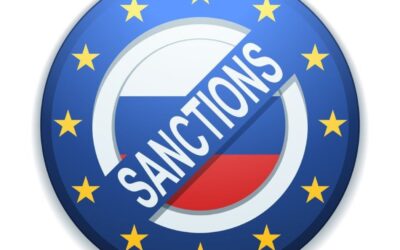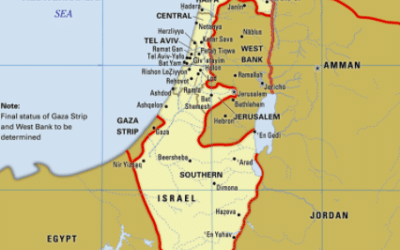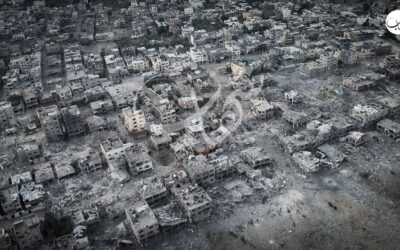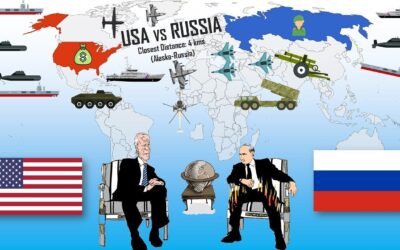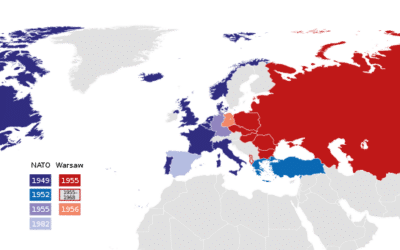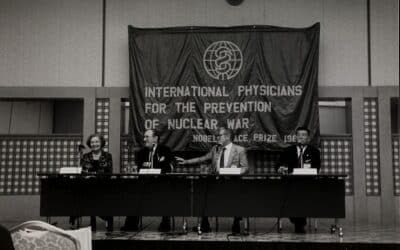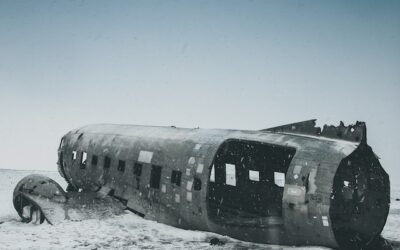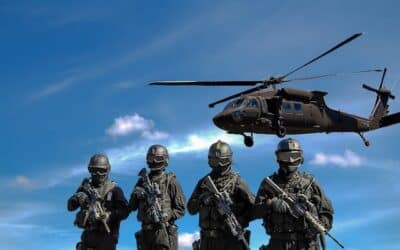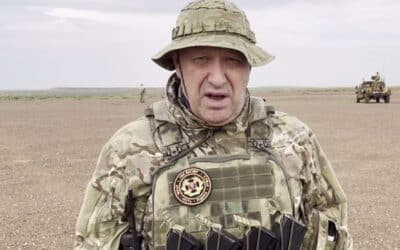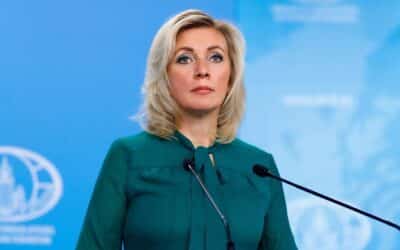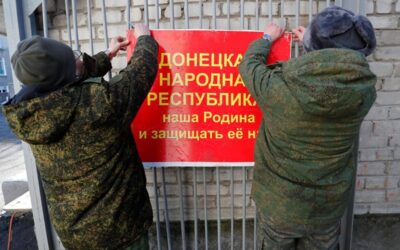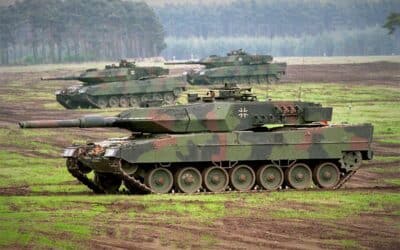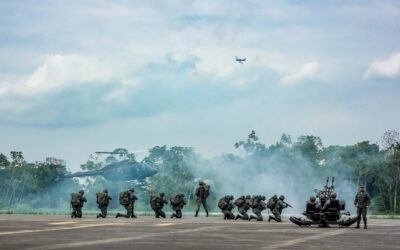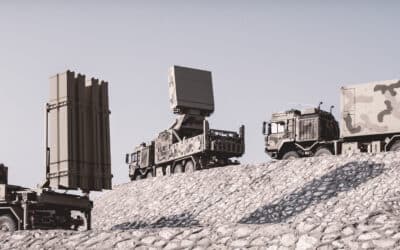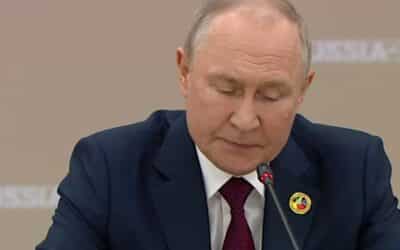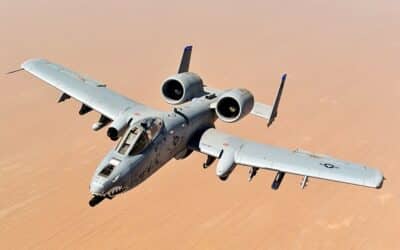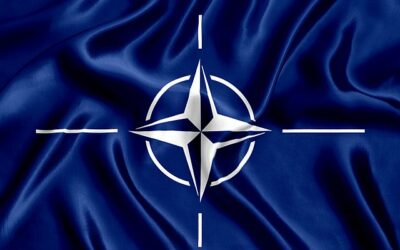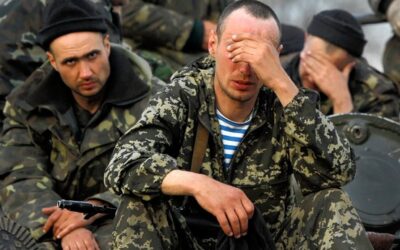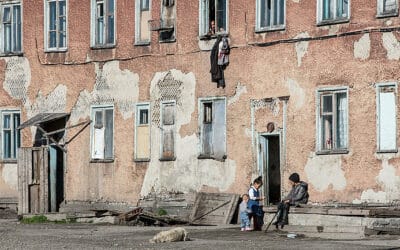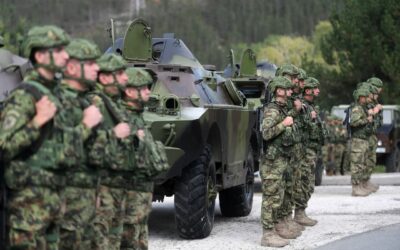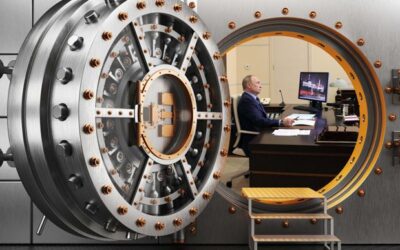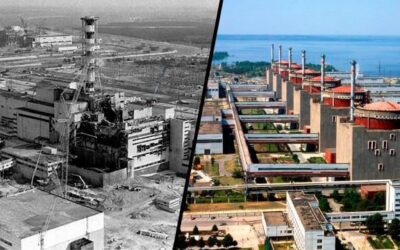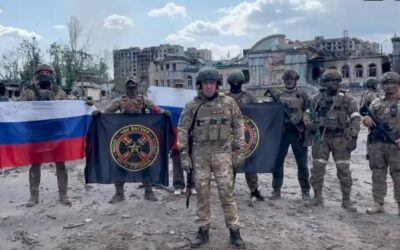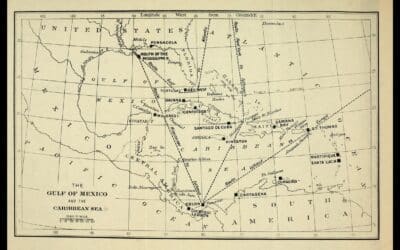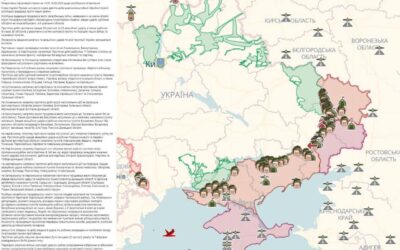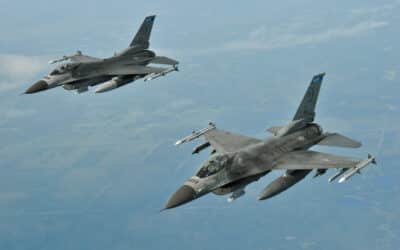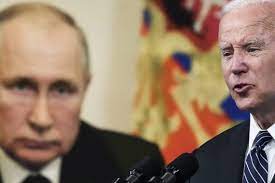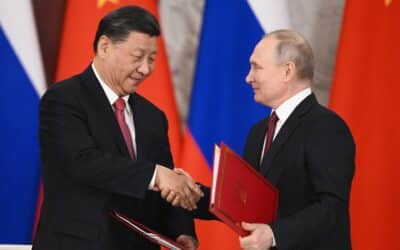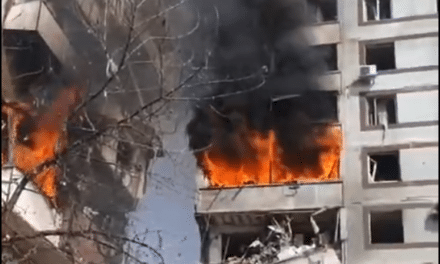The sheer power of nuclear weapons has long been a topic of global discussion. These devastating war tools have been a symbol of both fear and awe since their first use in the mid-20th century. Today, nations across the world continue to improve their nuclear arsenals, leading to some truly powerful weapons. In this post, we’re going to delve into the world’s most powerful nuclear weapons, exploring their capabilities, destructive power, and the countries that possess them. Prepare to gain a deeper understanding of the potent force that these weapons hold.
Definition of Nuclear Weapons
Nuclear weapons are incredibly powerful devices that use nuclear reactions to release an immense amount of energy in the form of an explosion. These weapons harness the power of the atomic nucleus, the core of an atom, to cause destruction on a scale that is difficult to comprehend.
How Do Nuclear Weapons Work?
Nuclear weapons primarily operate through two distinct processes: fission and fusion.
- Fission: This is the process in which the nucleus of an atom is split into two smaller nuclei. When a heavy atomic nucleus, such as uranium-235 or plutonium-239, is struck by a neutron, it becomes unstable and splits into two smaller nuclei, releasing a significant amount of energy in the process. This energy is what causes the devastating explosion associated with nuclear weapons.
- Fusion: Fusion is the process of combining two light atomic nuclei to form a heavier nucleus. In nuclear weapons, fusion is utilized to create an even more powerful explosion. A fission bomb, also known as a primary or trigger, is used to initiate the fusion process. The intense heat and pressure generated by the fission bomb compresses and heats a mixture of hydrogen isotopes, triggering a fusion reaction. This fusion reaction releases an immense amount of energy, resulting in an even more catastrophic explosion.
The Impact of Nuclear Weapons
The destructive power of nuclear weapons is unparalleled. The energy released during a nuclear explosion can cause widespread devastation, resulting in loss of life, destruction of infrastructure, and long-term environmental and health consequences. The effects of a nuclear explosion include:
- Blast: The initial blast wave from a nuclear explosion can flatten buildings, uproot trees, and cause severe injury or death to anyone within its range. The magnitude of this blast depends on the size of the weapon and the distance from the epicenter.
- Thermal Radiation: Nuclear explosions emit an intense burst of thermal radiation, which can cause severe burns and ignite fires over a wide area. This thermal energy can cause significant damage to structures and harm individuals even at a considerable distance from the blast.
- Radiation Effects: Following a nuclear explosion, radioactive materials are released into the environment. These materials can contaminate the air, water, and soil, posing long-term health risks to both humans and the environment. Exposure to high levels of radiation can lead to acute radiation sickness, genetic mutations, and an increased risk of developing cancer.
- Electromagnetic Pulse (EMP): A nuclear explosion can also generate a powerful electromagnetic pulse that can disrupt or damage electronic systems over a wide area. This can result in the failure of communication networks, power grids, and other critical infrastructure, leading to further chaos and impact on society.
The Global Concern
Nuclear weapons pose a significant threat to global security and stability. The immense destructive power, coupled with the potential for proliferation and accidental use, makes them a matter of grave concern for the international community. Efforts to prevent the spread of nuclear weapons and promote disarmament have been ongoing for decades, with various treaties and agreements in place to regulate their possession and use.
In conclusion, nuclear weapons are highly complex and devastating devices that utilize nuclear reactions to unleash catastrophic explosions. The impact of these weapons goes beyond the immediate devastation, with long-term consequences for both human health and the environment. The global community continues to grapple with the challenges posed by nuclear weapons, aiming to foster a world free from the threat of their use.
The Most Powerful Nuclear Weapons in History
Nuclear weapons have had a profound impact on the course of history, forever altering the way nations approach warfare and global security. In this section, we will explore some of the most powerful nuclear weapons ever developed.
1. Tsar Bomba
Yield: 50 Megatons
The Tsar Bomba holds the dubious distinction of being the most powerful nuclear weapon ever detonated. Developed and tested by the Soviet Union in 1961, this hydrogen bomb was designed to have a staggering yield of 50 megatons of TNT equivalent. To put that into perspective, it is 3,800 times more powerful than the atomic bomb dropped on Hiroshima.
2. B41 Nuclear Bomb
Yield: 25 Megatons
Another formidable weapon in the United States arsenal, the B41 nuclear bomb, was developed during the Cold War era. With a yield of 25 megatons, this bomb was capable of causing unprecedented destruction. However, it was later replaced by more advanced and precise weapons.
3. Castle Bravo
Yield: 15 Megatons
Castle Bravo was the codename for the largest ever detonated nuclear bomb by the United States. Exploded in 1954 as part of the Pacific Proving Grounds test series, this hydrogen bomb had a yield of 15 megatons. However, the actual explosion exceeded expectations, resulting in a yield of 15 million tons of TNT, making it more powerful than anticipated.
4. Ivy Mike
Yield: 10.4 Megatons
Ivy Mike, the first successful test of a hydrogen bomb by the United States, took place in 1952. It had an astonishing yield of 10.4 megatons, marking a significant milestone in the development of nuclear weapons. This detonation paved the way for the creation of even more destructive and powerful weapons.
5. RDS-220 Hydrogen Bomb (Tsar Bomba)
Yield: 50 Megatons
The RDS-220, commonly known as the Tsar Bomba, was previously mentioned but deserves a closer look. Developed by the Soviet Union and tested in 1961, it remains the most powerful nuclear weapon ever detonated. This bomb’s yield of 50 megatons was so immense that the shockwave circled the Earth three times. The sheer magnitude of its power is difficult to comprehend.
These formidable nuclear weapons are a stark reminder of humanity’s ability to harness immense destructive energy. While the Cold War may be a thing of the past, the threat of nuclear weapons continues to resonate in the present day. It is crucial that we work toward global disarmament and uphold diplomatic efforts to prevent the use of these devastating weapons.
How Nuclear Weapons are Measured
Nuclear weapons have always captured the world’s attention due to their devastating power. But have you ever wondered how scientists measure and quantify this power? In this section, we will explore the various methods and units used to measure the destructive capability of nuclear weapons.
Megatons and Kilotons
One common way to measure the power of a nuclear weapon is by using units called megatons (Mt) and kilotons (kt). These units refer to the amount of energy released during an explosion and are equivalent to one million and one thousand tons of TNT (trinitrotoluene), respectively.
To put this into perspective, let’s consider the atomic bomb dropped on Hiroshima in 1945. It had an estimated yield of approximately 15 kilotons of TNT. This means that the energy released during the explosion was equivalent to 15,000 tons of TNT detonating all at once.
TNT Equivalence
TNT equivalence is another method used to measure the power of nuclear weapons. It compares the energy released by a nuclear explosion to that of an equivalent amount of TNT. By using this comparison, scientists can easily convey the destructive potential of a nuclear weapon in terms that people can understand.
For example, if a nuclear bomb has a yield of 100 kilotons, it means that the amount of energy released is equivalent to the detonation of 100,000 tons of TNT. This measurement allows us to comprehend the sheer magnitude of the destructive force unleashed by nuclear weapons.
Nuclear Weapon Yield
The term “nuclear weapon yield” refers to the total amount of energy released by a nuclear explosion. It takes into account factors such as the design of the weapon, the types and quantities of fissile materials used, and the efficiency of the detonation process.
Yield is typically measured in kilotons or megatons, as mentioned earlier. The higher the yield, the more devastating the weapon is. Nuclear weapon yields can vary significantly, ranging from a few kilotons to multiple megatons. The largest nuclear bomb ever detonated, the Tsar Bomba developed by the Soviet Union, had an estimated yield of 50 megatons.
In conclusion, the power of nuclear weapons is measured using units like megatons and kilotons, which provide a sense of the energy released during an explosion. TNT equivalence is used to compare the destructive potential of a nuclear weapon to that of TNT. Finally, the term “nuclear weapon yield” encompasses the total amount of energy released by an explosion, and it is a crucial factor in understanding the destructive capabilities of these weapons.
Disclaimer: The purpose of this article is to provide information on how nuclear weapons are measured. It does not endorse or promote the use of nuclear weapons in any way.
The Impact of Nuclear Weapons
Nuclear weapons have the potential to cause immense devastation and destruction, leaving long-lasting effects on both the environment and human lives. The impact they can have is truly staggering, and it’s important to understand the magnitude of their destructive power. In this section, we will explore the devastating consequences, long-term environmental effects, as well as human casualties and injuries caused by nuclear weapons.
Devastation and Destruction
When a nuclear weapon is detonated, it unleashes an incredible amount of energy in the form of an explosion. This explosion can level entire cities, reducing buildings to rubble and causing widespread destruction. The force of the blast alone can demolish structures within a large radius, leaving behind a scene of utter devastation.
The intense heat generated by a nuclear explosion can cause fires to spread rapidly, further contributing to the destruction. These fires can consume everything in their path, exacerbating the already catastrophic situation. The combination of the blast, heat, and fires creates a deadly force that can wipe out entire communities in an instant.
Long-Term Environmental Effects
The impact of nuclear weapons extends far beyond the initial explosion. The detonation of a nuclear weapon releases a vast amount of radioactive material into the surrounding environment. This radiation can persist for years, causing long-term damage to the ecosystem.
Radioactive fallout can contaminate the soil, water sources, and vegetation, making them unsafe for human and animal consumption. It also poses a threat to future generations, as the effects of radiation exposure can be passed on genetically.
The long-term environmental effects of nuclear weapons include the destruction of habitats, disruption of ecosystems, and the contamination of air, water, and soil. These consequences can last for decades, if not centuries, impacting the environment and its inhabitants for generations to come.
Human Casualties and Injuries
The human toll of nuclear weapons cannot be overstated. The immediate impact of a nuclear explosion results in a high number of casualties and injuries. The blast wave alone can cause severe trauma, including burns, shattered bones, and internal injuries. The intense heat and fires can also lead to fatal burns and respiratory damage.
In addition to the immediate casualties, exposure to radiation can have long-lasting effects on human health. Radiation sickness, cancer, and genetic mutations are just some of the potential consequences of exposure to nuclear radiation. These health impacts can manifest years after the initial detonation, affecting not only those directly exposed but also future generations.
The psychological impact of nuclear weapons cannot be ignored either. The fear, trauma, and long-lasting psychological effects on survivors and affected communities are profound. The devastation caused by nuclear weapons extends beyond physical destruction, leaving a lasting impact on the human psyche.
Nuclear weapons are a stark reminder of the destructive power that humanity possesses. The devastation and destruction they bring, the long-term environmental effects they leave behind, and the human casualties and injuries they cause are all harrowing reminders of the catastrophic consequences of these weapons. It’s crucial that we continue to advocate for disarmament and work towards a world free of nuclear weapons.
International Regulations and Treaties
International regulations and treaties play a crucial role in maintaining global peace and security when it comes to nuclear weapons. In this section, we will explore three significant treaties: the Treaty on the Non-Proliferation of Nuclear Weapons (NPT), the Comprehensive Nuclear-Test-Ban Treaty (CTBT), and the Strategic Arms Reduction Treaty (START). Let’s delve into each of these treaties and their importance in ensuring nuclear disarmament and non-proliferation.
Treaty on the Non-Proliferation of Nuclear Weapons (NPT)
The Treaty on the Non-Proliferation of Nuclear Weapons, commonly known as the NPT, was opened for signature in 1968 and entered into force in 1970. It aims to prevent the spread of nuclear weapons, promote disarmament, and facilitate the peaceful use of nuclear energy. As a signatory to the NPT, countries commit to not acquiring nuclear weapons if they do not possess them and to work towards complete disarmament.
The NPT has been instrumental in curbing the proliferation of nuclear weapons. It has established a framework for international cooperation and negotiation on disarmament issues, serving as a critical foundation for global nuclear non-proliferation efforts. By encouraging countries to join the treaty and adhere to its provisions, the NPT significantly reduces the risk of nuclear conflict and promotes stability.
Comprehensive Nuclear-Test-Ban Treaty (CTBT)
The Comprehensive Nuclear Test Ban Treaty, known as the CTBT, was adopted by the United Nations General Assembly in 1996. Although it has not yet entered into force, it plays a crucial role in limiting the development and advancement of nuclear weapons. The treaty prohibits all forms of nuclear weapon test explosions, whether for military or civilian purposes.
By banning nuclear tests, the CTBT aims to prevent the qualitative improvement and development of nuclear weapons. It establishes a global monitoring system to detect any potential violations, ensuring that countries comply with the treaty’s provisions. The CTBT’s ultimate goal is to create a world free of nuclear testing and the continued development of nuclear arsenals.
Strategic Arms Reduction Treaty (START)
The Strategic Arms Reduction Treaty, commonly known as START, is an agreement between the United States and Russia aimed at reducing their strategic nuclear weapons. The treaty was first signed in 1991 and has been updated through subsequent agreements. It focuses on reducing the number of deployed strategic nuclear warheads and delivery systems.
START has played a vital role in nuclear disarmament and building trust between the United States and Russia. By reducing the number of nuclear weapons, the treaty helps to prevent an arms race and fosters stability in international relations. START exemplifies the importance of bilateral agreements in achieving disarmament goals and maintaining global security.
In conclusion, international regulations and treaties, such as the NPT, CTBT, and START, are essential for ensuring nuclear disarmament and non-proliferation. These treaties establish frameworks for cooperation, prohibit nuclear weapon tests, and reduce the number of nuclear weapons. By adhering to these agreements, nations contribute to a safer and more secure world, reducing the risk of nuclear conflict and promoting global stability.
Current Global Nuclear Arsenal
The current global nuclear arsenal is a topic of great importance and concern. In this section, we will explore the countries with nuclear weapons, their estimated stockpiles, and the ongoing efforts toward nuclear modernization.
Countries with Nuclear Weapons
There are several countries known to possess nuclear weapons. These nations have acquired these powerful weapons as a means of deterrence, national security, and influence on the global stage. As of now, the countries recognized as nuclear powers are:
- United States: The United States has the largest nuclear arsenal in the world, with an estimated 5,800 warheads, according to the Federation of American Scientists (FAS). They have been at the forefront of nuclear technology since the Manhattan Project in the 1940s.
- Russia: Following closely behind the United States, Russia possesses a significant number of nuclear warheads, estimated to be around 6,375, according to FAS. Russia’s nuclear capabilities stem from its Soviet past and continue to play a crucial role in its military strategy.
- China: China is another major player in the nuclear arms race, although its stockpile is comparatively smaller than that of the United States and Russia. It is estimated that China currently has around 320 nuclear warheads, according to FAS.
- France: With a long-standing commitment to maintaining an independent nuclear deterrent, France possesses approximately 290 nuclear warheads, according to FAS. France’s nuclear arsenal provides it with the capability to respond to any potential threats to its national security.
- United Kingdom: The United Kingdom, being a close ally of the United States, also possesses a nuclear arsenal, albeit smaller in scale. It is estimated that the U.K. has around 195 nuclear warheads, according to FAS.
- India: India is among the countries that have openly acknowledged possessing nuclear weapons. It has an estimated stockpile of around 156 nuclear warheads, according to FAS. India’s nuclear program is driven by regional security concerns and its relationship with neighboring Pakistan.
- Pakistan: Pakistan, a nuclear-armed nation, has an estimated stockpile of around 165 nuclear warheads, according to FAS. Pakistan’s nuclear program emerged as a response to India’s nuclear capabilities, and it continues to factor into the regional security dynamics.
- North Korea: Despite being a subject of international controversy, North Korea has pursued its nuclear ambitions. The exact number of North Korea’s nuclear warheads remains uncertain, with estimates ranging from 30 to 40 warheads, according to FAS.
Estimated Stockpiles
The estimated stockpiles mentioned above provide an overview of each country’s nuclear arsenal, but it is important to note that these figures are approximations, as the actual numbers tend to be classified information. Additionally, some countries may prioritize quality over quantity, focusing on developing more advanced and sophisticated nuclear weapons.
Nuclear Modernization Efforts
Furthermore, countries with nuclear weapons have ongoing nuclear modernization efforts to enhance the effectiveness and reliability of their arsenals. These modernization programs involve the development of new delivery systems, improvements in warhead designs, and upgrades to the infrastructure supporting nuclear capabilities.
For instance, the United States has been investing in the modernization of its nuclear triad, which consists of intercontinental ballistic missiles (ICBMs), submarine-launched ballistic missiles (SLBMs), and strategic bombers. This modernization aims to ensure the long-term viability and credibility of the U.S. nuclear deterrent.
Similarly, Russia has also been engaged in modernizing its strategic nuclear forces, including the development of advanced delivery systems like the hypersonic glide vehicle and next-generation ballistic missiles.
Such modernization efforts are driven by the need to maintain deterrence, keep up with technological advancements, and address potential threats in an ever-evolving global security landscape.
Conclusion
In conclusion, the development and existence of the most powerful nuclear weapons have been a topic of concern and fascination for decades. These weapons possess an unprecedented destructive capability, capable of causing immense devastation and loss of life. The sheer power and destructive force of these weapons serve as a constant reminder of the importance of nuclear disarmament and the need for global cooperation to prevent their use.
While these weapons have the potential to bring catastrophic consequences, they also underline the need for peace and diplomacy in international relations. The threat of nuclear weapons has prompted nations to engage in arms control treaties and negotiations to mitigate the risks associated with their deployment. It is imperative for countries to prioritize disarmament efforts and work towards a world free from the threat of nuclear war.
In addition, the existence of powerful nuclear weapons has pushed scientists and researchers to explore alternative sources of energy. The risks and environmental concerns associated with nuclear weapons have fueled the development of renewable energy technologies, such as solar and wind power, as sustainable alternatives.
Overall, understanding the immense power and potential consequences of the most powerful nuclear weapons is crucial. It is only through comprehensive disarmament, diplomatic negotiations, and a global commitment to peace that we can ensure a safer and more secure future for generations to come.
Related Articles
10 Best Handguns for Self-Defense
When it comes to...
The Truth About Sanctions: Why Don’t They “Work”?
In 2022,...
History of Israel-Palestine Conflict
Israel and...
After the WAR initiated by HAMAS on October 7th, the Middle East will not be the same
On the -th of...
The Israeli army is prepared for an offensive on the Gaza Strip, involving attacks from “air, sea, and land.”
The IDF (Israel...
War in Israel: Current Developments – Video
Rafah...
Russia vs USA: Who Would Win in a Potential War?
In the...
NATO vs China: Who Would Win in a Potential War?
In the realm of...
11 Best Assault Rifles in the World
Welcome to a world...
Yevgeny Prigozhin (Wagner founder) is dead
According...
What You Need to Know About Joining NATO
Has any country...
Terrifying Realities of a Potential Nuclear War
The Devastating...
What to Do in Case of a Nuclear Attack
What to Do in Case...
11 Strongest and Most Powerful Navies in the World
When it comes to...
Understanding the Nature of War – The Clash of Wills
War is the...
Ukrainian Defense Forces Celebrate One-Year Anniversary of Kherson Region Liberation
Around one year...
Prigozhin First Video Speech After Unsuccessful Uprising
Following a recent...
11 Best Sniper Rifles in the World
Important Factors...
What is Russia saying about the war in Ukraine, Episode 1
Did you ever...
13 Most Powerful Weapons in the World
Weapons of immense...
What is Happening in Russia, Episode 3
Welcome to the...
What is Happening in Russia, Episode 2
Have you ever...
10 Strongest Tanks in the World
Tanks represent...
10 Strongest Armies in the World
When it comes to...
Putin: We cannot stop the fire when they advance on us!
Putin ten...
10 Best Air Defence Systems in the World
Image:...
Alexei Navalny Letters From Prison
Image:...
Ukraine’s Struggle for Survival and Western Dependency
Ukraine has long...
What is Happening in Russia, Episode 1
Have you ever...
10 Strongest Fighter Jets in the World
Image:...
10 Strongest NATO Members
Image:...
Mobilized Soldiers Expose Dire Conditions and Neglect in Deployment to Luhansk
source:...
Why is everything so poor and sad in Russia?
Image:...
Tensions Escalate in Northern Kosovo as Serbian President Mobilizes Army
Image:...
Putin’s Russia and the Need for a Fresh Security Approach in Europe
Image:...
DeSantis Declares Presidential Bid with Elon Musk
Image:...
Russian military personnel shelled the Zaporizhia Nuclear Power Plant
Image:...
Prigozhin Revelations The Truth Behind the Capture of Bakhmut
Image:...
President Zelensky Visit G7 Turning Point in Russia-Ukraine War
Image:...
Turning a Blind Eye No More: Zelensky’s Bold Stand Against Crimean Annexation
Unfortunately,...
Navigating the Fluidity of War and Geography: Insights and Strategies
War is Geography:...
Latest Updates on Russian Invaders’ Activities in Occupied Territories
Russian Invaders...
US Denies Ukrainian Pilots Training on F-16 Fighter Jets
Complexities of...
West Strong Support for Ukraine’s Recovery and Containment of Russia
Kremlin's Failed...
Ukraine Supreme Court Chairman Confronts Allegations of Blatant Bribery
Vsevolod Knyazev...
Gold Coin Treasure from Alexander the Great Era found in Annexed Crimea
Crimea's Hidden...
Rishi Sunak Hails Zelenskyy as a Modern-Day Churchill
Volodymyr...
The Moral Factor in War: Ukraine’s Key to Victory
"We were actively...
The West’s Triumph in the New Cold War: Technology of Freedom Wins Out
The Chinese leader...
The Illusion of Power: How Putin’s Russia is Making the Same Mistakes as its Past Leaders
Modern Russia and...
